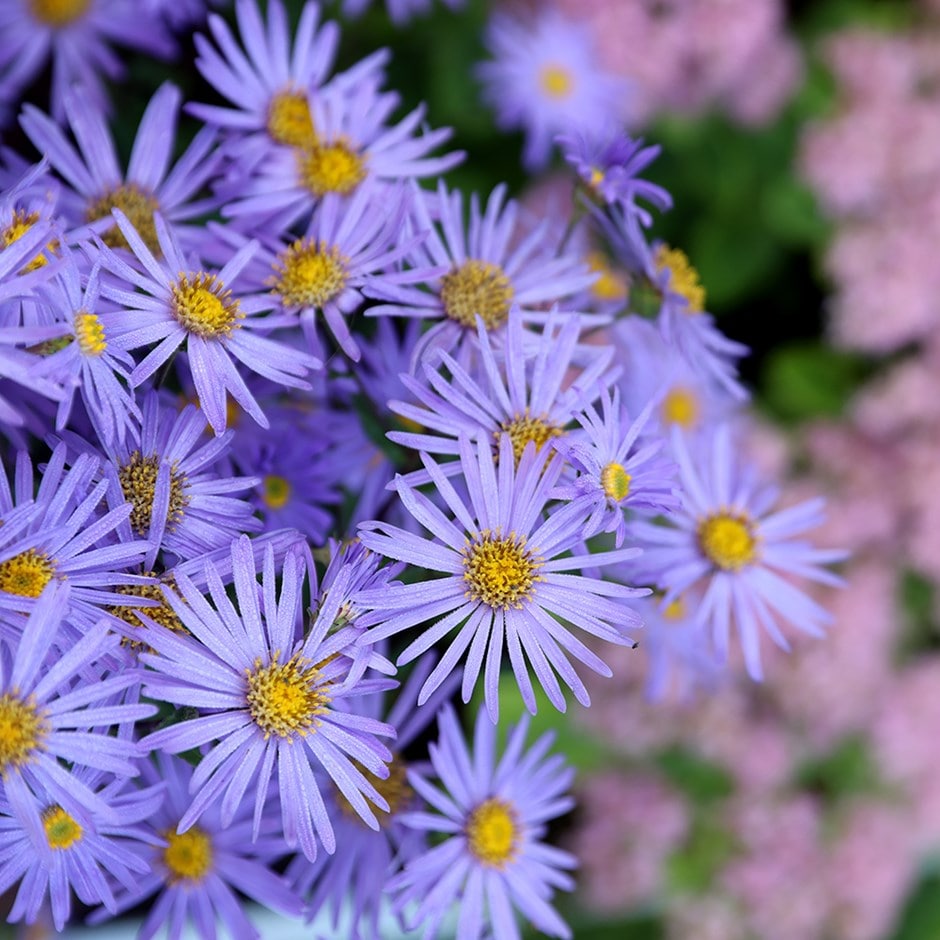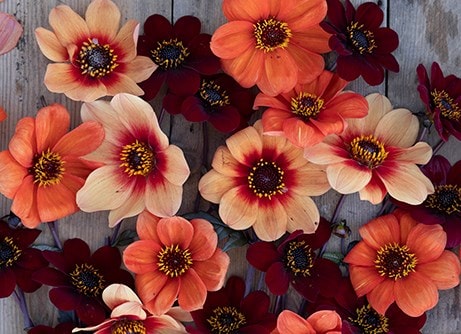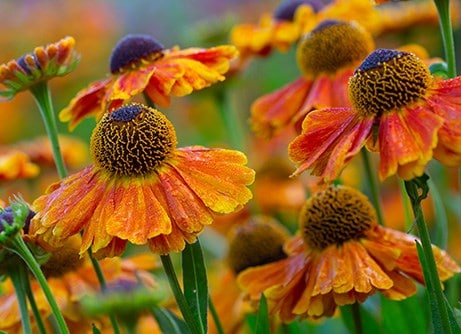
For a long period throughout summer and autumn, this sturdy, neat plant is smothered with large (to 6cm wide) and showy, rich purple-blue flowerheads that have golden yellow centres.
One of the best and most reliable asters, this cultivar has a good resistance to mildew. Ideal for adding late colour to the garden, it mixes well with other late flowering perennials such as Rudbeckia, Achillea and Echinacea. 'King George' will also blend well with ornamental grasses for prairie style planting schemes.
One of the best and most reliable asters, this cultivar has a good resistance to mildew. Ideal for adding late colour to the garden, it mixes well with other late flowering perennials such as Rudbeckia, Achillea and Echinacea. 'King George' will also blend well with ornamental grasses for prairie style planting schemes.
How to care for Aster amellus King George:
Choose a location with full sun to ensure the best flowering.
Asters prefer well-drained, loamy soil rich in organic matter. If your soil is heavy or clay-based, incorporate compost or well-rotted manure to improve drainage and fertility.
Space the plants about 45-60cm (18-24in) apart to give them room to grow and ensure good air circulation, which helps prevent diseases.
Insert twiggy prunings early in the season to provide invisible and effective support.
To encourage bushier growth and more flowers, pinch back the stems when the plants are about 15-20cm (6-8in) tall - you can also remove spent flowers to extend the blooming period.
Leave top growth on through the winter to provide protection and valuable food for birds and insects, or cut down in autumn if the plants are particularly spent.
Apply a thick 5-7cm (2-3in) mulch around the base of the plant in the spring, taking care not to cover the crown.
Asters prefer well-drained, loamy soil rich in organic matter. If your soil is heavy or clay-based, incorporate compost or well-rotted manure to improve drainage and fertility.
Space the plants about 45-60cm (18-24in) apart to give them room to grow and ensure good air circulation, which helps prevent diseases.
Insert twiggy prunings early in the season to provide invisible and effective support.
To encourage bushier growth and more flowers, pinch back the stems when the plants are about 15-20cm (6-8in) tall - you can also remove spent flowers to extend the blooming period.
Leave top growth on through the winter to provide protection and valuable food for birds and insects, or cut down in autumn if the plants are particularly spent.
Apply a thick 5-7cm (2-3in) mulch around the base of the plant in the spring, taking care not to cover the crown.
Flowering period:
- Jan
- Feb
- Mar
- Apr
- May
- Jun
- Jul
- Aug
- Sep
- Oct
- Nov
- Dec
Eventual height:
0.45m
Eventual spread:
0.45m
Position:
Light shade
Rate of growth:
Average
Soil:
Moderately fertile, moist, well-drained soil
Hardiness:
Fully hardy
-
This perennial dies back to below ground level each year in autumn, then fresh new growth appears again in spring.
Product options

9cm pot
£9.99
In stock
(shipped within 2-3 working days)
(shipped within 2-3 working days)

3 × 9cm pots
£22.99
£7.66 each
In stock
(shipped within 2-3 working days)
(shipped within 2-3 working days)

6 × 9cm pots
£39.99
£6.67 each
In stock
(shipped within 2-3 working days)
(shipped within 2-3 working days)
1
Delivery options (pick your preferred option at checkout)
Standard Delivery£5.99
Named Day Delivery£10.99
Goes well with
Achillea 'Walther Funcke'
yarrow
From £9.99
View options
| 9cm pot | £9.99 |
|
|
| 3 × 9cm pots | £22.99 |
|
|
| 6 × 9cm pots | £39.99 |
|
|
| 2 litre pot | £18.99 |
|
|
| 3 × 2 litre pots | £49.99 |
|
View details










